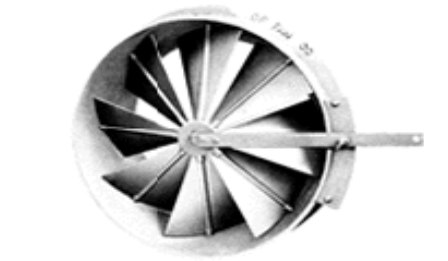| 1. |
The term “_______________” is used when referring to the static pressure |
|
|
System Resistance |
|
|
Frictional Component |
| 2. |
The system resistance is the sum of static pressure losses in the system. The system resistance is a function of the configuration of ducts, pickups, elbows and the pressure drops across equipment, for example bag filter or cyclone. |
|
|
True |
|
|
False |
| 3. |
There exist two main fan types. ________ fans used a rotating impeller to move the air stream. ____ fans move the air stream along the axis of the fan. |
|
|
Centrifugal; Axial |
|
|
Axial; Centrifugal |
| 4. |
According to Table-2 on Page-6. What is the disadvantage of Radial fans, with flat blades? |
|
|
Only suitable for low-medium airflow rates |
|
|
High durability |
| 5. |
According to Table-2 on Page-6. What is the advantage of Forward curved fans, with forward curved blades? |
|
|
Fan output is difficult to adjust accurately |
|
|
Low noise level (due to low speed) and well suited for residential heating, ventilation, and air conditioning (HVAC) applications. |
| 6. |

According to the above diagram, what is the name of this specific fan? (Refer to Figure-8)
|
|
|
Backward Inclined Fan |
|
|
Forward-Curved Fan |
| 7. |
Blowers can achieve much higher pressures than fans, as high as 1.20 kg/cm2. They are also used to produce _______ pressures for industrial vacuum systems. |
|
|
Positive |
|
|
Negative |
| 8. |
Centrifugal blowers typically operate against pressures of __________ to _________ kg/cm2, but can achieve higher pressures. One characteristic is that airflow tends to drop drastically as system pressure increases, which can be a disadvantage in material conveying systems that depend on a steady air volume. Because of this, they are most often used in applications that are not prone to clogging. |
|
|
0.35 to 0.70 kg/cm2 |
|
|
0.70 to 1.4 kg/cm2 |
| 9. |

According to Table-5 on Page-16, are this information TRUE or FALSE?
|
|
|
True |
|
|
False |
| 10. |
The fan efficiency depends on the type of fan and impeller. As the flow rate increases, the efficiency in _________ to certain height (“peak efficiency”) and then decreases with further increasing flow rate. |
|
|
decreases |
|
|
increases |
|